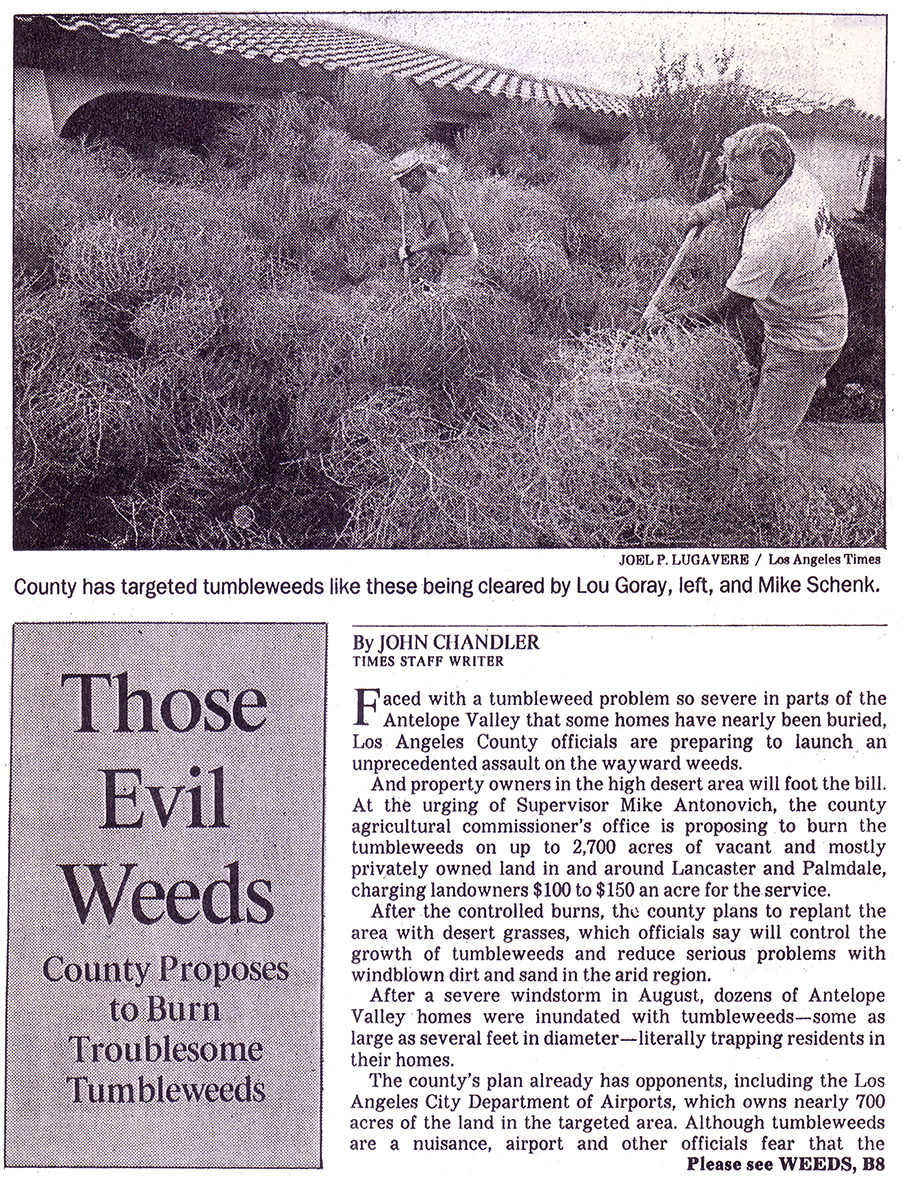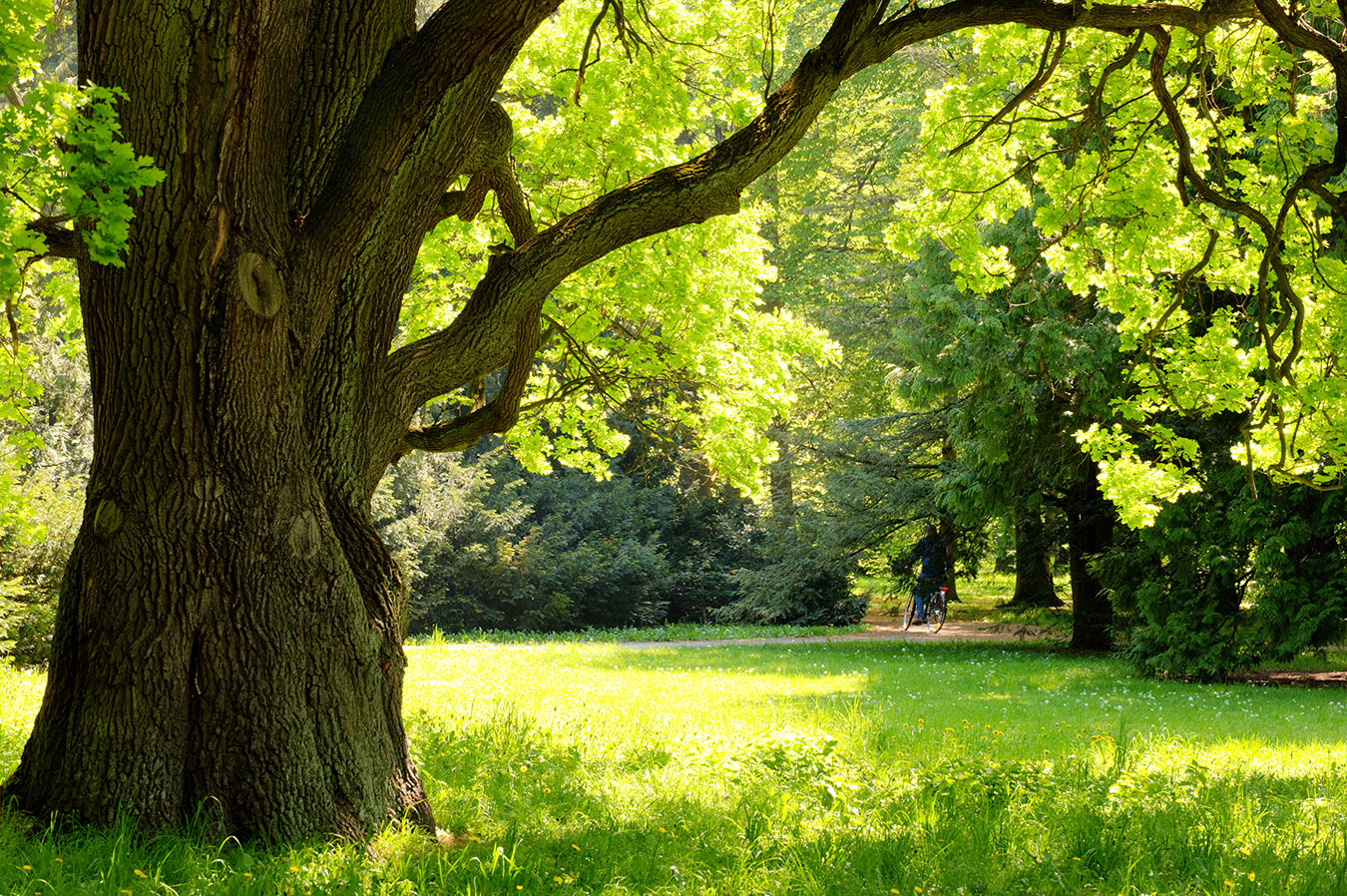
Property Owner Responsibility
Property owners are expected to maintain their properties hazard free throughout the year.
Seasonality of Some Hazards
Property owners are expected to maintain their properties hazard free throughout the year. Dense native brush, certain ornamental vegetation and neglected/dead landscaping can burn almost any time of the year, but new annual weeds and grass may not become a significant hazard until they start to dry in late spring at which point they become an increasingly dangerous fire hazard until they are cut or removed. Refer to the next section for more information on when property clearance should be performed.
ACWM tractor discing operations begin as early as April 1 at which time annual weeds may still be green in some areas. This is because ACWM must take advantage of a very narrow window of opportunity to clear as many weeds as possible before the onset of the fire season.
Specific Requirements
Property must be maintained free of hazardous vegetation for a minimum of 100 feet from any home or other structure adjacent to the property and a minimum of 10 feet along roads. Clearance of hazardous vegetation up to 200 feet is required in many areas because of additional fire hazard conditions. These high fire hazard areas are usually in or near foothills or other areas with slopes and native brush.
The entire 100 feet (or 200 feet in high fire hazard areas) does not have to be cleared down to bare ground in most cases. Refer to the following guidelines:
Since dry grass and weeds are the most likely fuel to start a fire, they should be cut or mowed to a height of 3 inches or less throughout the entire clearance area unless it is needed for soil stabilization. In most cases, the dry grass and weeds can simply be left on site if they are cut into small pieces no more than 6 inches in length. Click here for examples
Grass and other vegetation located more than 30 feet from a structure and less than 18 inches in height above the ground, may be maintained where necessary to stabilize the soil and prevent erosion. If this is the case, please contact our office at 626.575.5484.
There should be very little to no native brush within about 30 feet of a home or other structure. Beyond that distance, individual specimens of native brush can remain as long as they are isolated from one another by a distance of at least 15 feet or three times their diameter and are maintained free of all dead and dying material. Taller shrubs and trees should be limbed up from the ground to about 1/3 of their height so that they are less likely to ignite from a fire originating from the ground. Click here for examples
Please see Native Tree Protection Ordinances below for restrictions on tree trimming.
There should be no dry, dead or neglected landscaping/ornamental vegetation, including cultivated ground cover such as grass, ivy, succulents, or similar plants, in the clearance area if such vegetation provides a means of transmitting a fire to a structure or if such vegetation provides a means of transmitting fire from a structure to adjacent land. Click here for examples
There may be additional requirements for improved properties. Contact the Los Angeles County Fire Department's Brush Clearance Unit at 626.969.2375.
Tumbleweeds
Over the years, the tumbleweed element of ACWM's weed abatement program has been successful at reducing one of the Antelope Valley's worst natural plagues. Each year, ACWM includes vacant properties in the program if there is a reasonable likelihood that that tumbleweeds will grow and mature on the property in amounts sufficient to cause such unsafe, destructive or nuisance conditions as:
Posing a fire hazard to adjacent homes
Blowing across highways and through busy intersections
Building up along homes and businesses
Clogging swimming pools
Damaging agricultural crops and irrigation equipment
Many of the properties included in the program because of tumbleweeds are not adjacent to homes and therefore owners may not have to remove annual weeds, brush or other vegetation. If you are unsure about what you are supposed to do, you should call our Antelope Valley office at 661.974.8803.
It is ACWM's experience that the best time to abate tumbleweeds is just after they become dry but before they begin to blow off the property driven by one of the Antelope Valley's frequent windstorms. For this reason, ACWM does not begin systematically inspecting vacant properties for tumbleweed abatement until October 1. For more information on the tumbleweed program, click the button below.

Figure 2: A scanned image from the October 25, 1990, Los Angeles Times showing residents digging out of an Antelope Valley home after a tumbleweed "storm". Some residents were reportedly trapped inside their homes by huge mounds of the invasive plant

